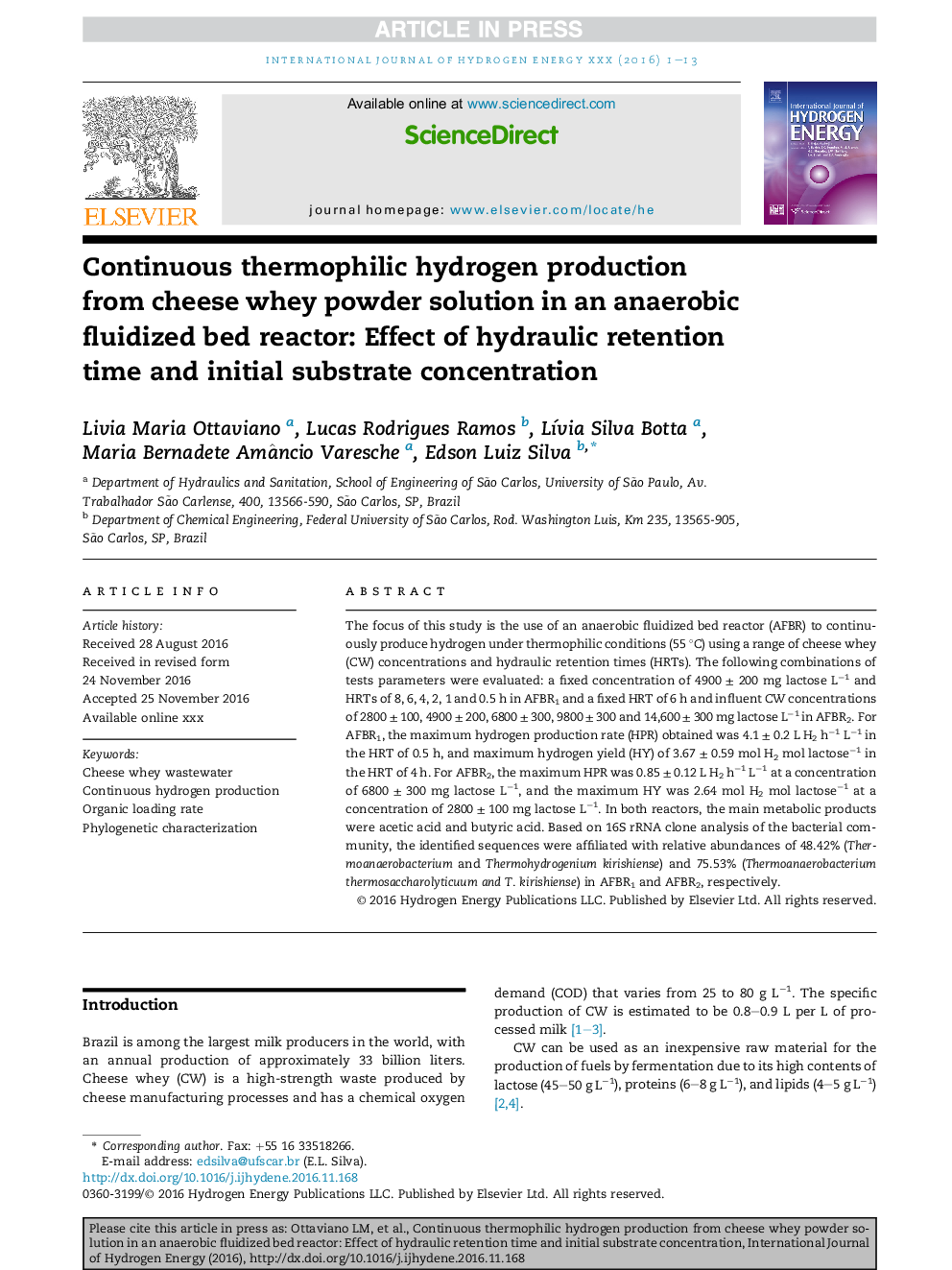| Article ID | Journal | Published Year | Pages | File Type |
|---|---|---|---|---|
| 5148360 | International Journal of Hydrogen Energy | 2017 | 13 Pages |
Abstract
The focus of this study is the use of an anaerobic fluidized bed reactor (AFBR) to continuously produce hydrogen under thermophilic conditions (55 °C) using a range of cheese whey (CW) concentrations and hydraulic retention times (HRTs). The following combinations of tests parameters were evaluated: a fixed concentration of 4900 ± 200 mg lactose Lâ1 and HRTs of 8, 6, 4, 2, 1 and 0.5 h in AFBR1 and a fixed HRT of 6 h and influent CW concentrations of 2800 ± 100, 4900 ± 200, 6800 ± 300, 9800 ± 300 and 14,600 ± 300 mg lactose Lâ1 in AFBR2. For AFBR1, the maximum hydrogen production rate (HPR) obtained was 4.1 ± 0.2 L H2 hâ1 Lâ1 in the HRT of 0.5 h, and maximum hydrogen yield (HY) of 3.67 ± 0.59 mol H2 mol lactoseâ1 in the HRT of 4 h. For AFBR2, the maximum HPR was 0.85 ± 0.12 L H2 hâ1 Lâ1 at a concentration of 6800 ± 300 mg lactose Lâ1, and the maximum HY was 2.64 mol H2 mol lactoseâ1 at a concentration of 2800 ± 100 mg lactose Lâ1. In both reactors, the main metabolic products were acetic acid and butyric acid. Based on 16S rRNA clone analysis of the bacterial community, the identified sequences were affiliated with relative abundances of 48.42% (Thermoanaerobacterium and Thermohydrogenium kirishiense) and 75.53% (Thermoanaerobacterium thermosaccharolyticuum and T. kirishiense) in AFBR1 and AFBR2, respectively.
Related Topics
Physical Sciences and Engineering
Chemistry
Electrochemistry
Authors
Livia Maria Ottaviano, Lucas Rodrigues Ramos, LÃvia Silva Botta, Maria Bernadete Amâncio Varesche, Edson Luiz Silva,
